Internal Force Response of a Pile in an Inhomogeneous Temperature Field
Abstract
:1. Introduction
2. Model Test Design
2.1. Test Equipment
2.2. Test Methods
2.3. Layout of the FBG Sensors along the Pile
2.4. Layout of the Temperature Sensors
3. Data Analysis
3.1. Time-Dependent Temperatures
3.2. Temperature Difference between Two Opposite Sides of the Pile
3.3. Strain Variation of the Pile
4. Bending Moment along the Pile Caused by Temperature Difference
5. Conclusions
Acknowledgments
Author Contributions
Conflicts of Interest
References
- Rees, S.J. Advances in Ground-Source Heat Pump Systems; Woodhead Publishing: Duxford, UK, 2016. [Google Scholar]
- Brandl, H. Thermo-active ground-source structures for heating and cooling. Procedia Eng. 2013, 57, 9–18. [Google Scholar] [CrossRef]
- Bourne-Webb, P.; Burlon, S.; Javed, S.; Kürten, S.; Loveridge, F. Analysis and design methods for energy geostructures. Renew. Sustain. Energy Rev. 2016, 65, 402–419. [Google Scholar] [CrossRef]
- Kramer, C.A.; Ghasemi-Fare, O.; Basu, P. Laboratory thermal performance tests on a model heat exchanger pile in sand. Geotech. Geol. Eng. 2015, 33, 253–271. [Google Scholar] [CrossRef]
- Jalaluddin, A.M.; Tsubaki, K.; Inoue, S.; Yoshida, K. Experimental study of several types of ground heat exchanger using a steel pile foundation. Renew. Energy 2011, 36, 764–771. [Google Scholar] [CrossRef]
- Eskilson, P.; Claesson, J. Simulation model for thermally interacting heat extraction boreholes. Numer. Heat Transf. 1988, 13, 149–165. [Google Scholar] [CrossRef]
- Ghasemi-Fare, O.; Basu, P. A practical heat transfer model for geothermal piles. Energy Build. 2013, 66, 470–479. [Google Scholar] [CrossRef]
- Ozudogru, T.Y.; Olgun, C.G.; Senol, A. 3D numerical modeling of vertical geothermal heat exchangers. Geothermics 2014, 51, 312–324. [Google Scholar] [CrossRef]
- Abdelaziz, S.; Ozudogru, T.Y. Non-uniform thermal strains and stresses in energy piles. Environ. Geotech. 2016, 3, 237–252. [Google Scholar] [CrossRef]
- Hetnarski, R.B.; Eslami, M.R. Thermal Stresses—Advanced Theory and Applications; Springer: Dordrecht, The Netherlands, 2008. [Google Scholar]
- Laloui, L.; Nuth, M.; Vulliet, L. Experimental and numerical investigations of the behaviour of a heat exchanger pile. Int. J. Numer. Anal. Methods Geomech. 2006, 30, 763–781. [Google Scholar] [CrossRef]
- Brandl, H. Energy foundations and other thermo-active ground structures. Geotechnique 2006, 56, 81–122. [Google Scholar] [CrossRef]
- Ouyang, Y.; Soga, K.; Leung, Y.F. Numerical back-analysis of energy pile test at Lambeth College, London. Geo-Front. Congr. 2014, 211, 440–449. [Google Scholar]
- Gui, S.Q.; Cheng, X.H. In-Situ tests on structural responses of energy piles during heat exchanging process. Chin. J. Geotech. Eng. 2014, 36, 1087–1094. [Google Scholar]
- Sutman, M.; Olgun, C.; Brettmann, T. Full-Scale Field Testing of Energy Piles. In Proceedings of the International Foundations Congress and Equipment Expo 2015, San Antonio, TX, USA, 17–21 March 2015; Geotechnical Special Publication. ASCE: Reston, VA, USA, 2015; pp. 1638–1647. [Google Scholar]
- Lu, H.W.; Jiang, G.; Wang, H. In-Situ tests and thermo-mechanical bearing characteristics of friction geothermal energy piles. Chin. J. Geotech. Eng. 2017, 39, 334–342. [Google Scholar]
- Park, S.; Lee, S.; Lee, H.; Pham, K.; Choi, H. Effect of borehole material on analytical solutions of the heat transfer model of ground heat exchangers considering groundwater flow. Energies 2016, 9, 318. [Google Scholar] [CrossRef]
- Poloso, T. Fibre Bragg gratings optical sensing technology. Smart Mater. Bull. 2001, 2001, 7–10. [Google Scholar] [CrossRef]
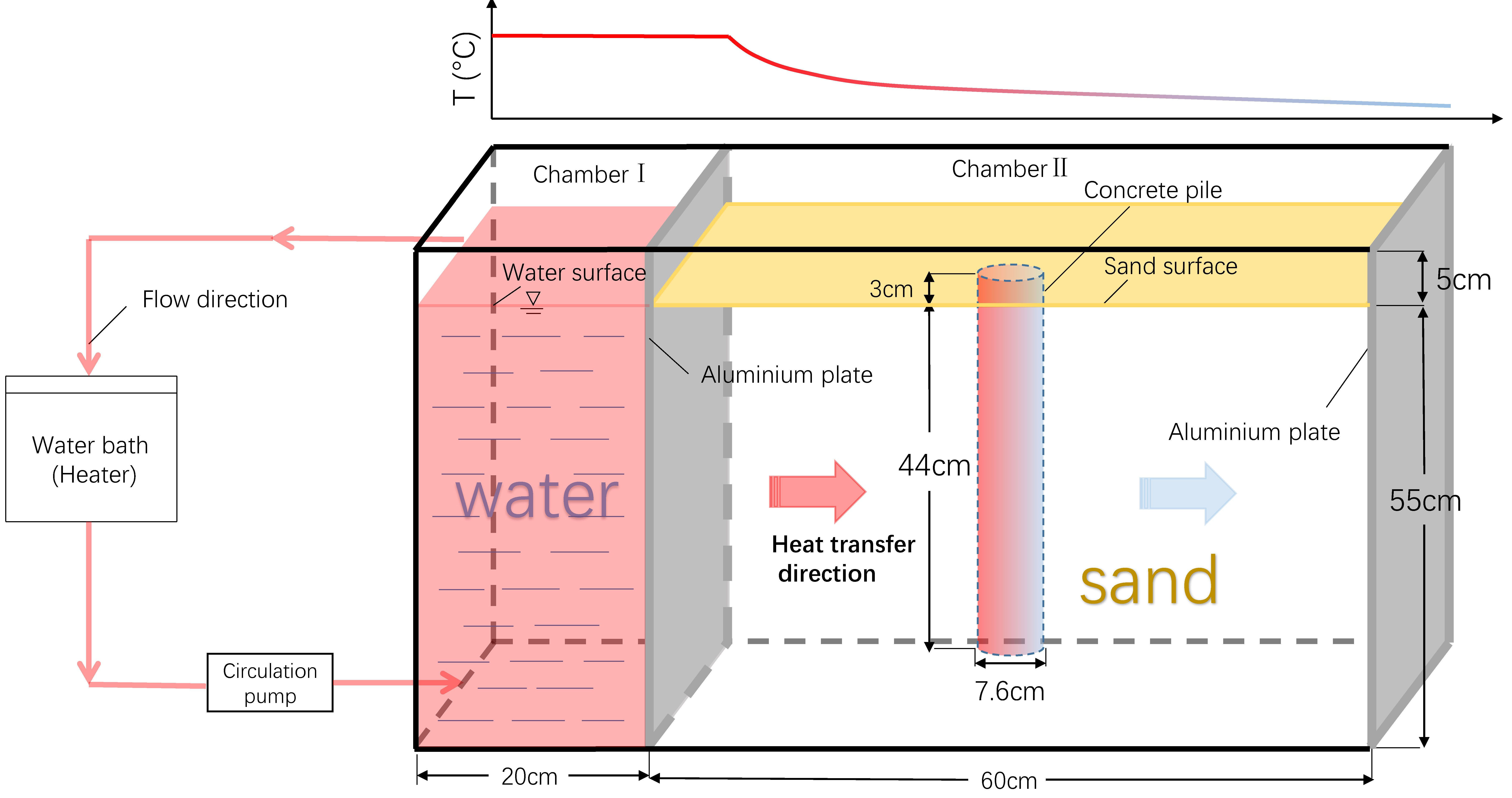
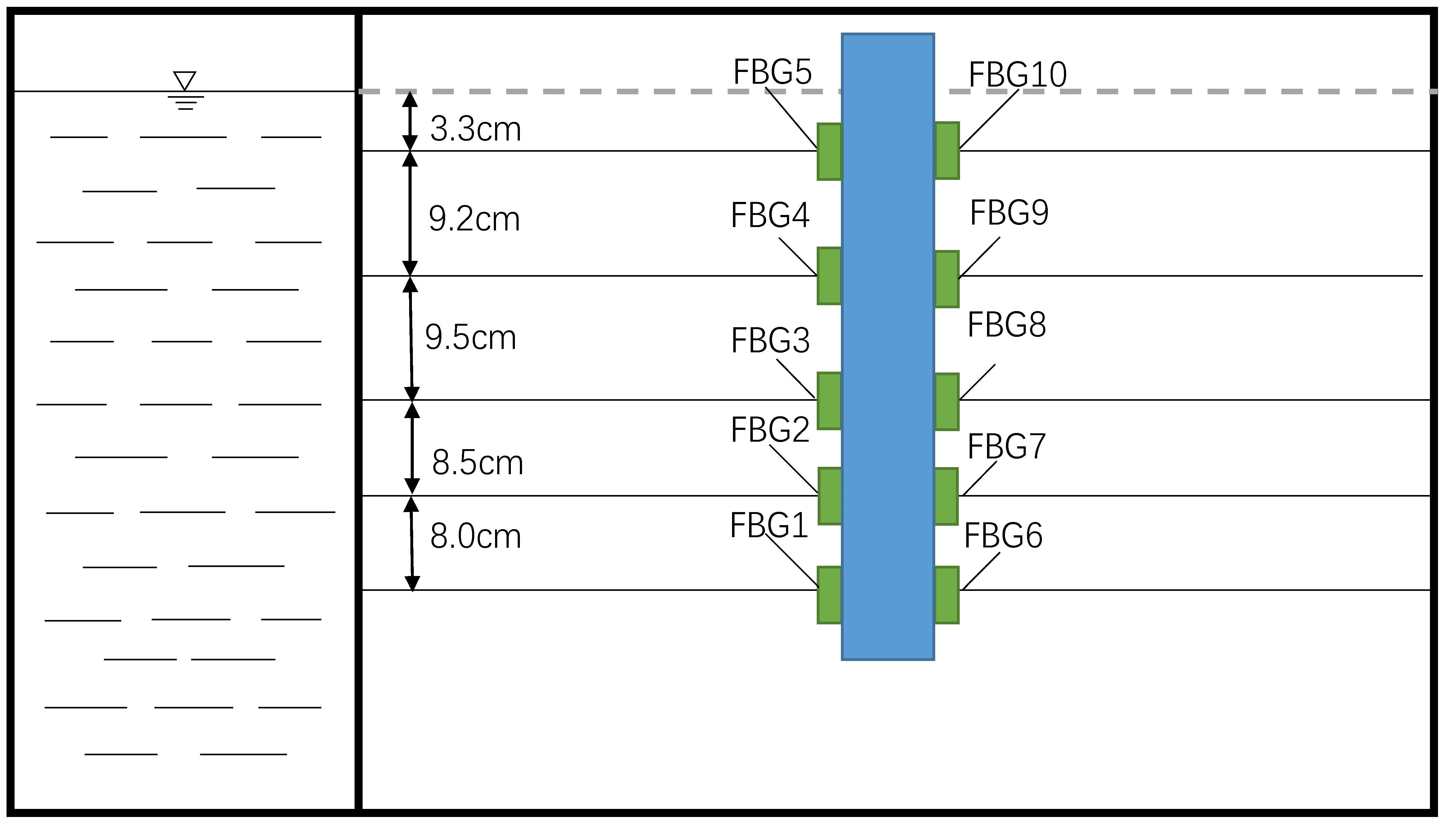

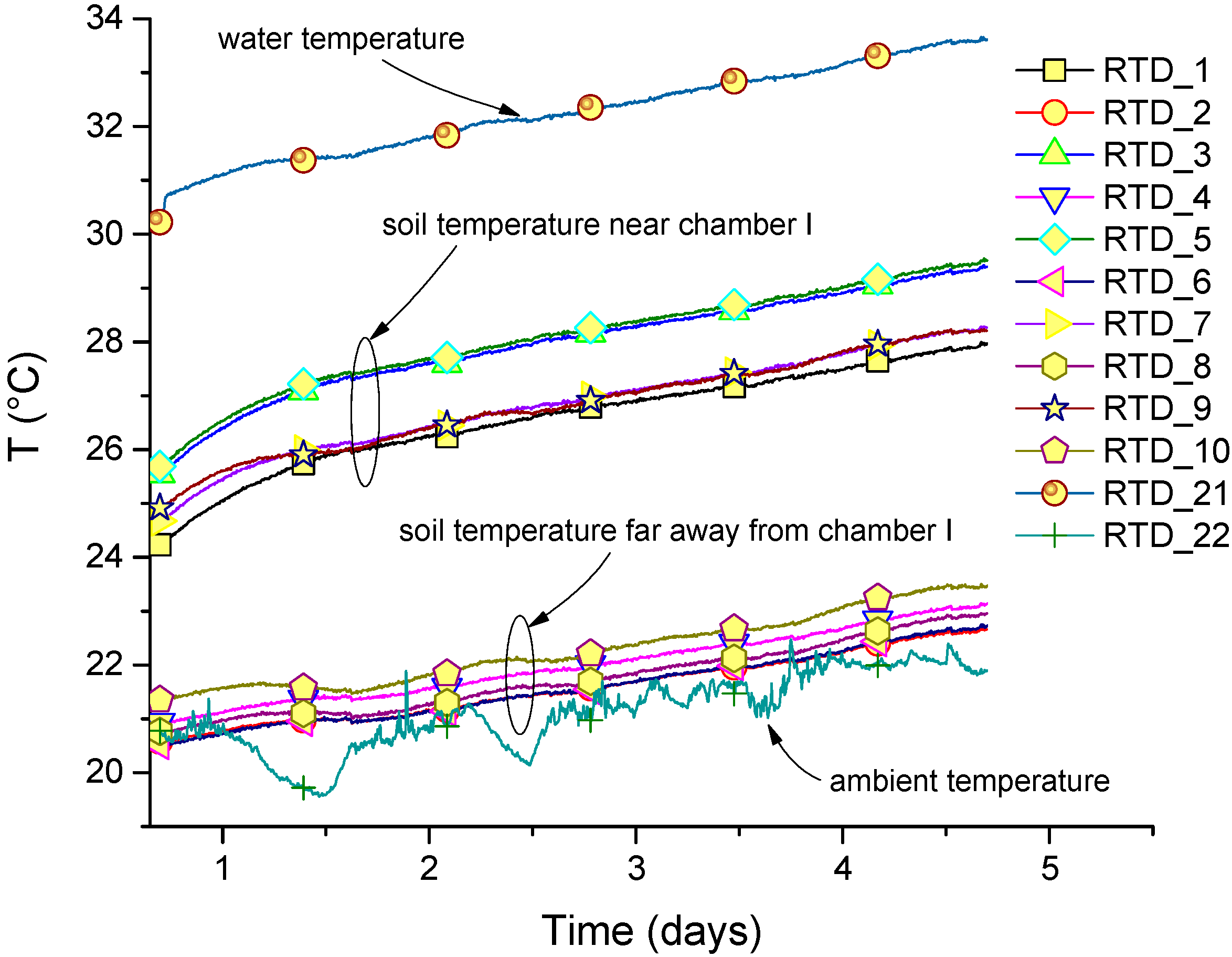
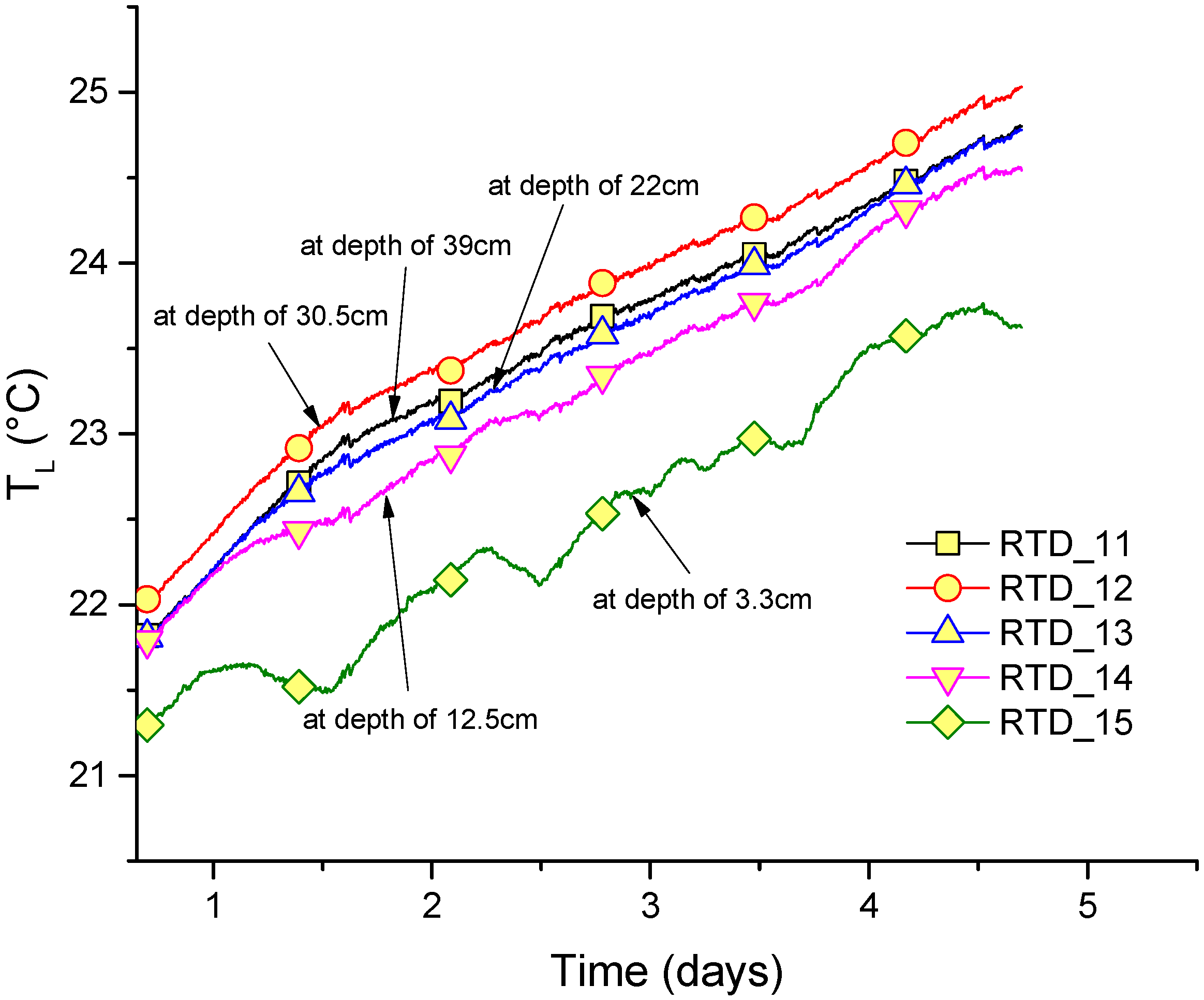
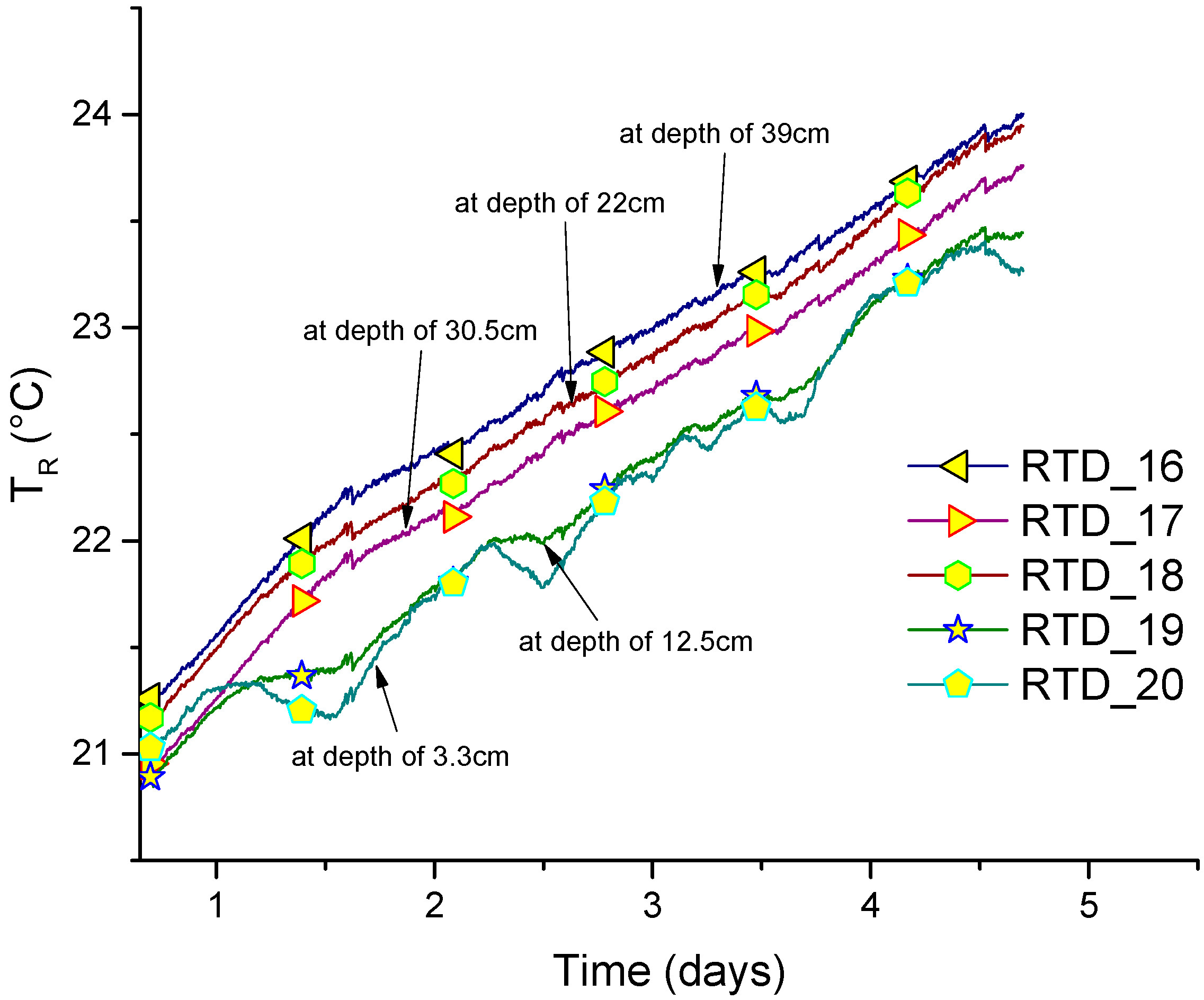
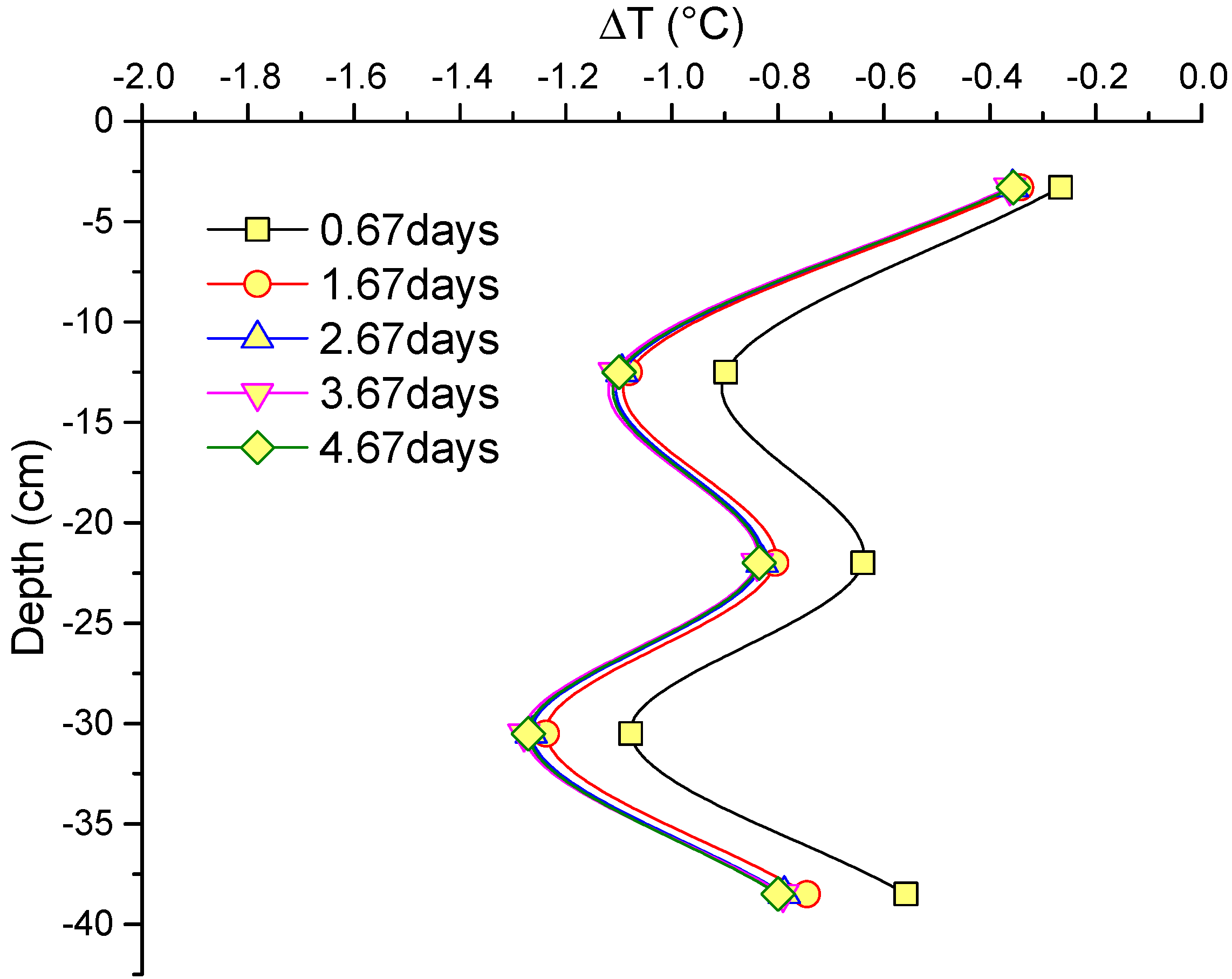
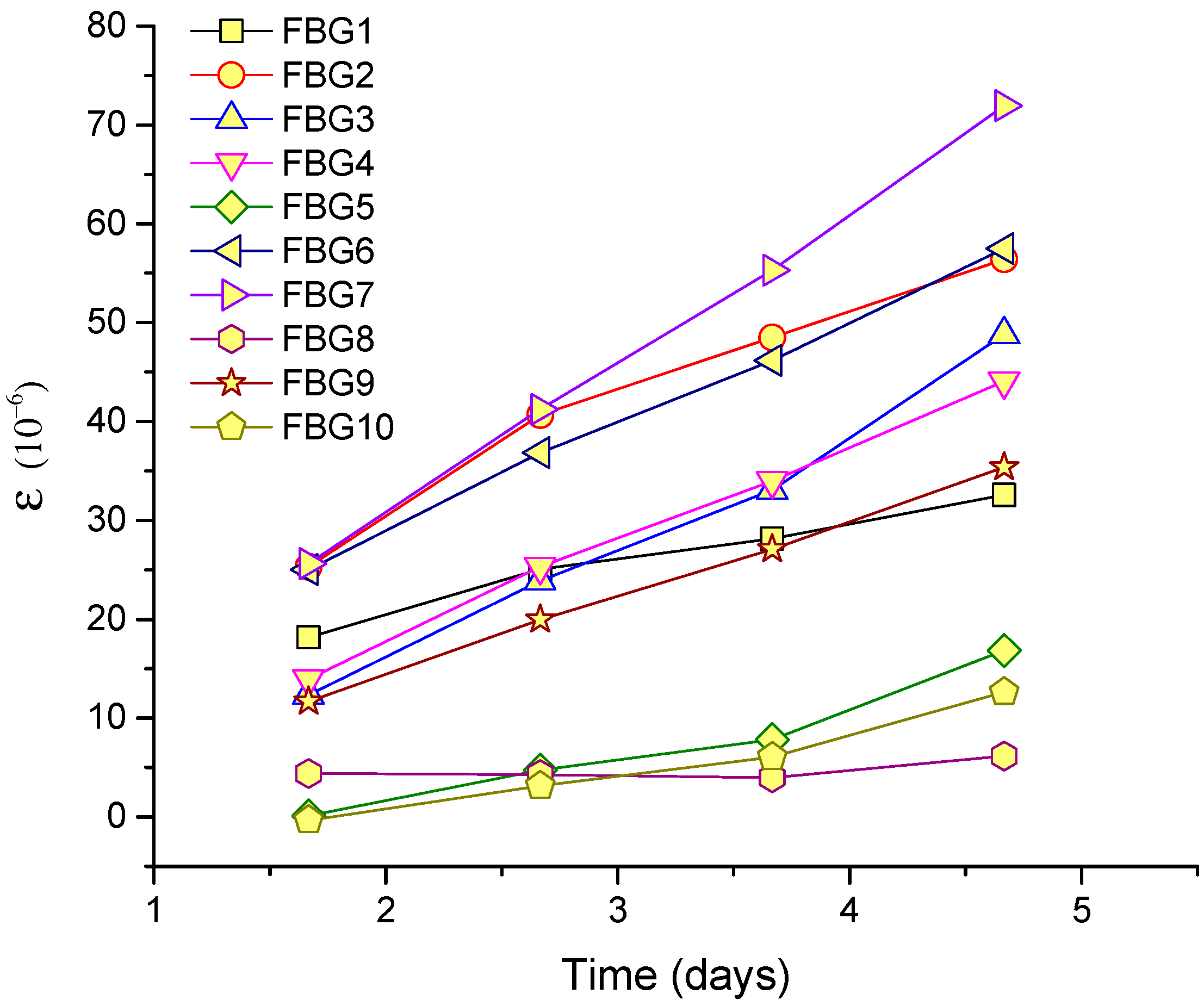
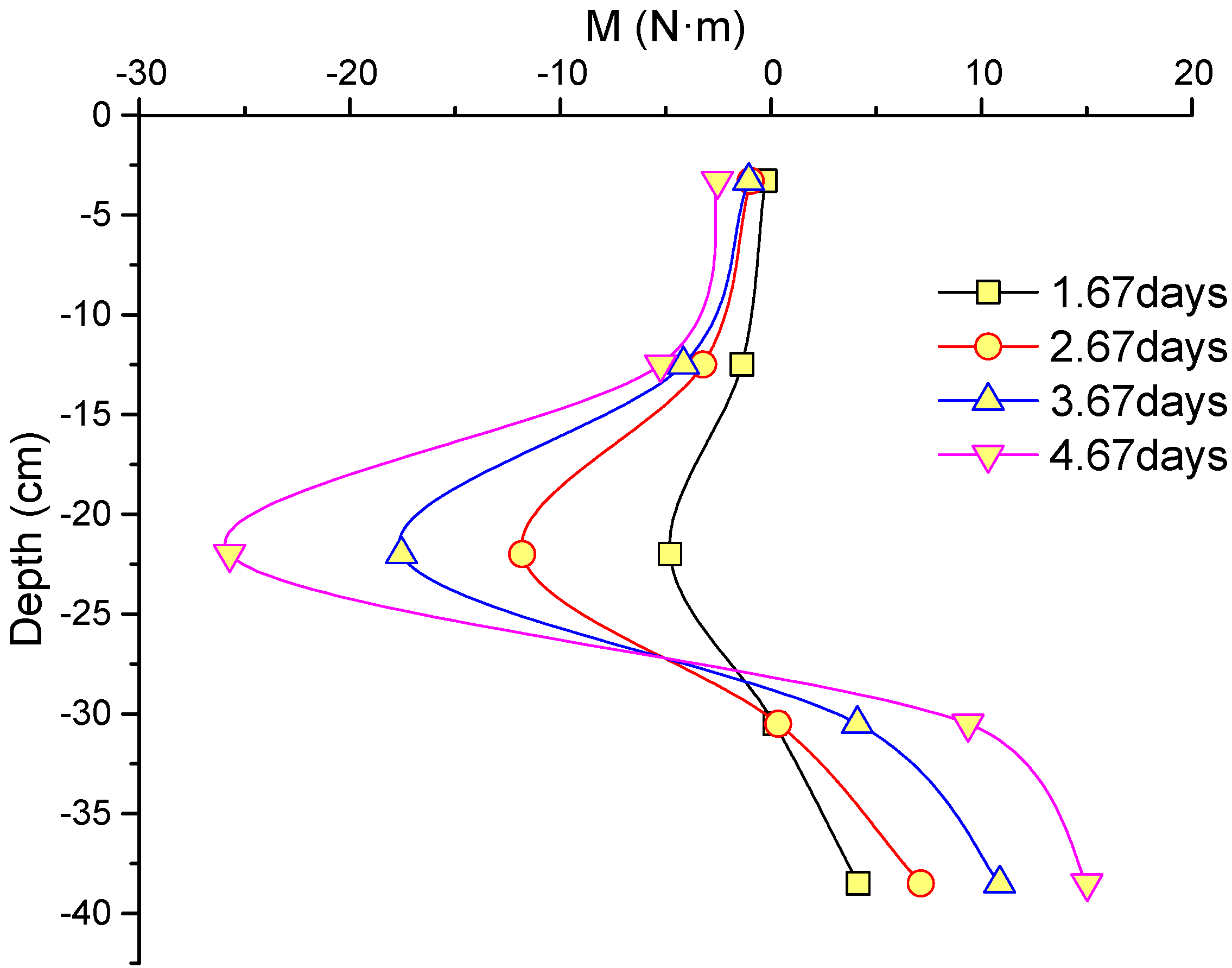
| Type | Maximum Dry Density/(g·cm−3) | Minimum Dry Density/(g·cm−3) | Particle Size/mm | Thermal Conductivity/(W·m−1·K−1) | Specific Heat Capacity/(J·kg−1·K−1) |
|---|---|---|---|---|---|
| Fine sand | 1.71 | 1.39 | 0.01–2.00 | 0.51 | 1100 |
© 2017 by the authors. Licensee MDPI, Basel, Switzerland. This article is an open access article distributed under the terms and conditions of the Creative Commons Attribution (CC BY) license (http://creativecommons.org/licenses/by/4.0/).
Share and Cite
Zhang, D.; Wang, Y.; Cheng, J. Internal Force Response of a Pile in an Inhomogeneous Temperature Field. Energies 2018, 11, 18. https://doi.org/10.3390/en11010018
Zhang D, Wang Y, Cheng J. Internal Force Response of a Pile in an Inhomogeneous Temperature Field. Energies. 2018; 11(1):18. https://doi.org/10.3390/en11010018
Chicago/Turabian StyleZhang, Dan, Yian Wang, and Jian Cheng. 2018. "Internal Force Response of a Pile in an Inhomogeneous Temperature Field" Energies 11, no. 1: 18. https://doi.org/10.3390/en11010018
APA StyleZhang, D., Wang, Y., & Cheng, J. (2018). Internal Force Response of a Pile in an Inhomogeneous Temperature Field. Energies, 11(1), 18. https://doi.org/10.3390/en11010018





